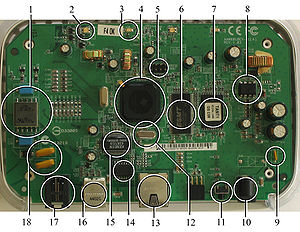
An embedded system is a computer system designed to
perform one or a few dedicated functions [1][2], often with real-time computing
constraints. It is embedded as part of a complete device often including
hardware and mechanical parts. In contrast, a general-purpose computer, such as
a personal computer, is designed to be flexible and to meet a wide range of an
end-user's needs. Embedded systems control many of the common devices in use
today [3].
Embedded systems are controlled by a main processing core that is typically
either a microcontroller or a digital signal processor (DSP)[4].
Since the embedded system is dedicated to specific tasks, design engineers can
optimize it reducing the size and cost of the product and increasing the
reliability and performance. Some embedded systems are mass-produced, benefiting
from economies of scale.
Physically, embedded systems range from portable devices such as digital watches
and MP3 players, to large stationary installations like traffic lights, factory
controllers, or the systems controlling nuclear power plants. Complexity varies
from low, with a single microcontroller chip, to very high with multiple units,
peripherals and networks mounted inside a large chassis or enclosure.
In general, "embedded system" is not an exactly defined term, as many systems
have some element of programmability. For example, handheld computers share some
elements with embedded systems such as the operating systems and microprocessors
which power them, but are not truly embedded systems, because they allow
different applications to be loaded and peripherals to be connected.
Wikipedia